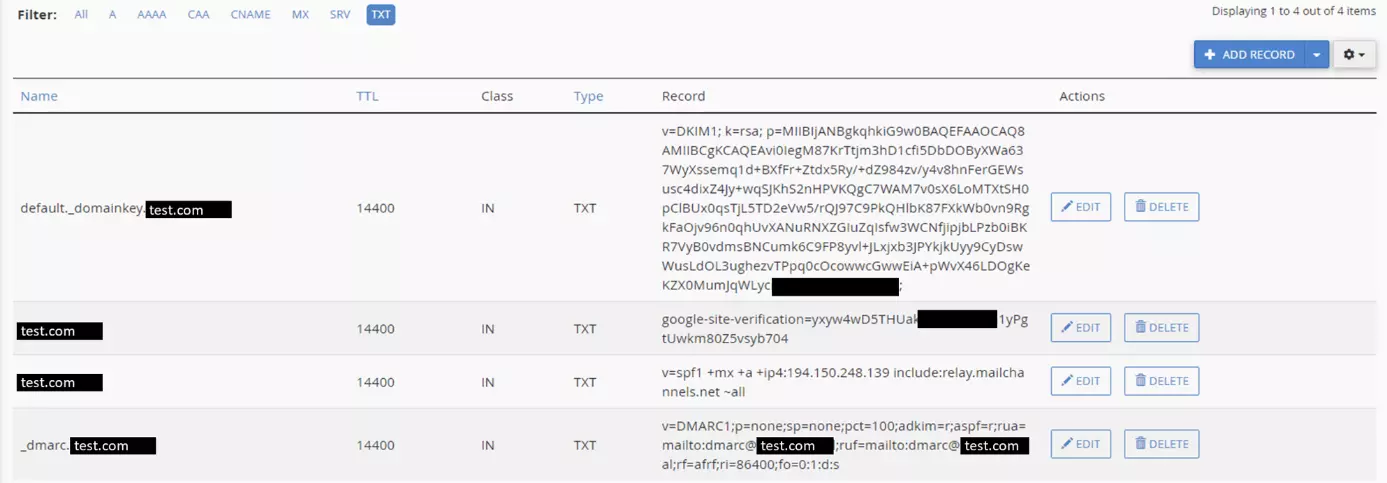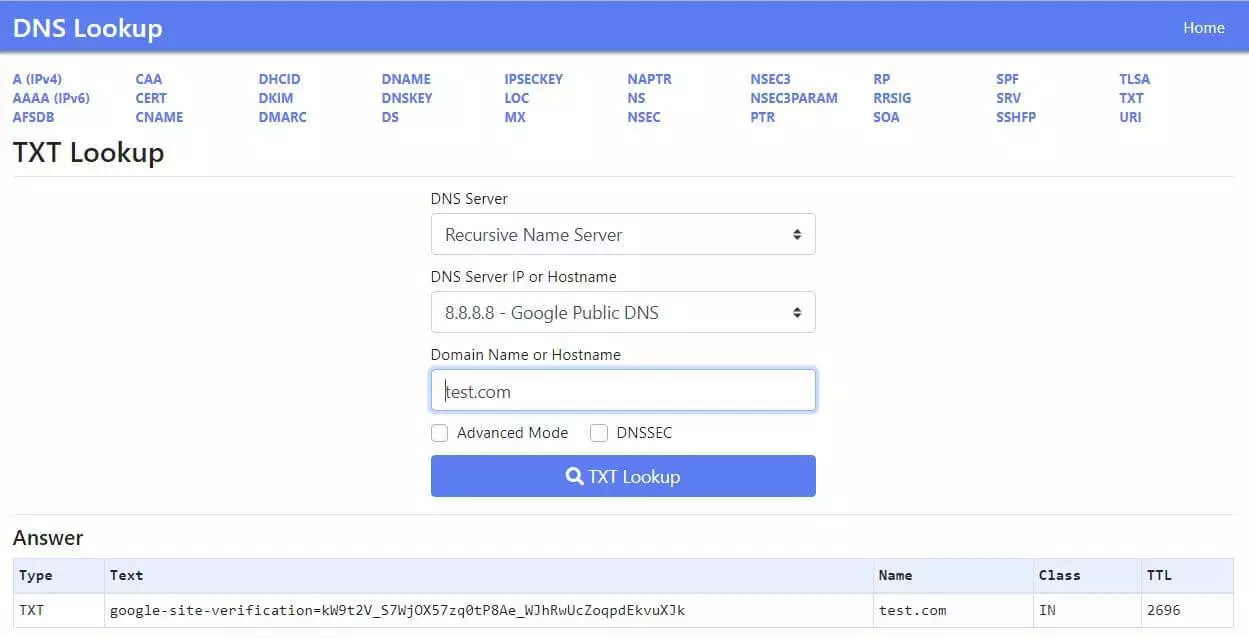TXT resource records
If you host your own website, you need to know about many technical details that your visitors never have to worry about. One of the most important details is the function of the Domain Name System and the information it contains. In this article, we’ll explain what TXT records are used for.
- Simple registration
- Premium TLDs at great prices
- 24/7 personal consultant included
- Free privacy protection for eligible domains
What are DNS records and what is a TXT record?
Every domain is linked to name servers (DNS) so that it can be queried by its name on the web. For example, the DNS server “translates” the name test.com into the IP address 69.172.200.235.
However, DNS servers do more than just translate a domain name into an IP address. They can provide a large amount of information that is required for smooth and secure exchange of data on the Internet. This information is stored in DNS resource records. There are many different types of resource records, such as CNAME records, A records, PTR records or SOA records. Each of these record types is used for a specific purpose and requires a specific format.
For an introduction to DNS records and a summary of the different record types, see our overview of DNS records.
TXT records are the most flexible type of record. They allow you to store freely definable text and are used for a wide variety of applications. Typical TXT record examples include code keys, which are required to authenticate the domain for services such as Google Analytics.
Creating a TXT record
You typically create TXT records according to the instructions of the service that requires the record. Normally, you receive the full contents of the TXT record so you can easily copy it.
Most importantly, the name of the entry must be correct. TXT records are usually given a specific subdomain name. For example, a DMARC record (see the last line in the screenshot) must always be given the subdomain name _dmarc.
How you create the TXT record depends on the hosting provider. Learn how to add a TXT record.
Looking up a TXT record
TXT records are publicly accessible. A variety of free lookup tools are available online, such as DNS Lookup or Google.
- Free Wildcard SSL for safer data transfers
- Free private registration for more privacy
- Free 2 GB email account
You can keep the default settings for the DNS server. Click TXT at the top right and enter the domain name (test.com in this example). The TXT record lookup tool returns matching TXT records (in this example, the key for Google Site Verification).
If you must enter a DNS server and don’t know which IP address to use, type in 8.8.8.8. This Google DNS server always works.
You can also run a DNS lookup using the standard tools in Windows. To do this, open Command Prompt (type cmd in the search bar) and use the command nslookup. Our related article explains in detail how to perform a DNS check with nslookup.
- 2 GB+ storage
- Sync across all your devices
- Spam filter and ad-free



